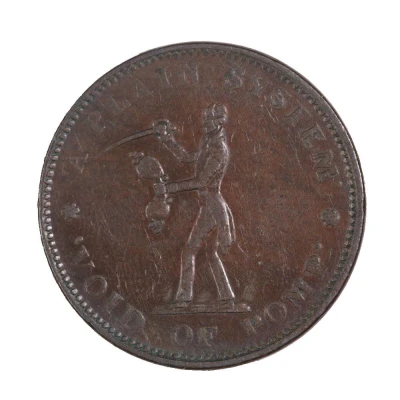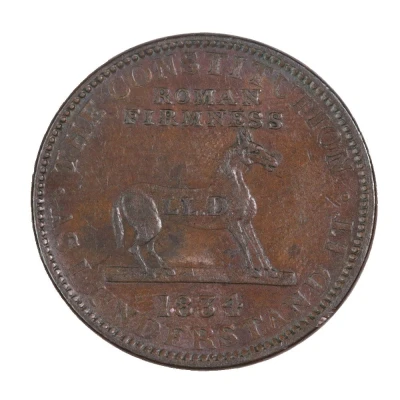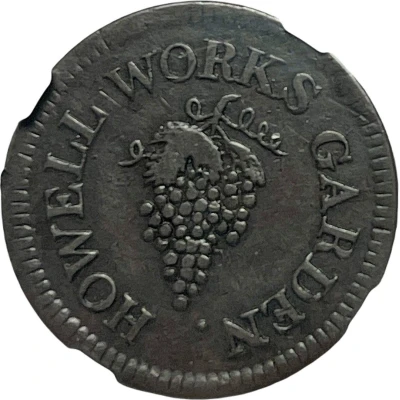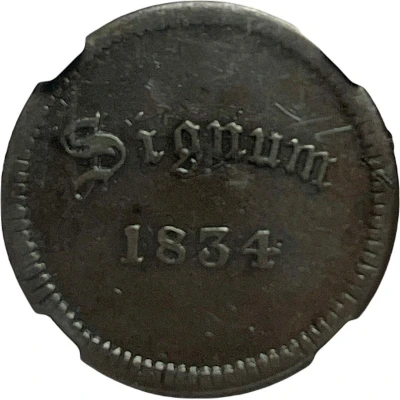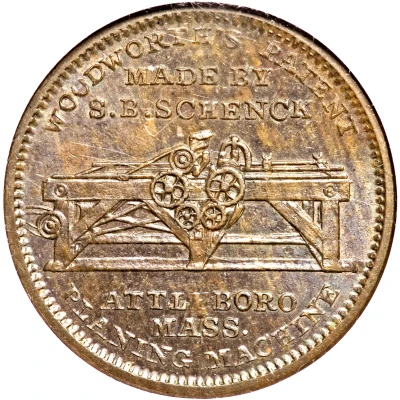
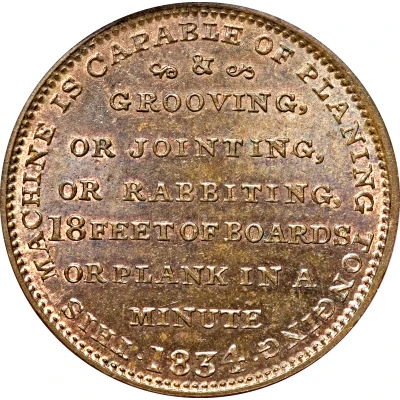

© Heritage Auctions
Hard Times Merchant Token - S. B. Schenck, Woodworth's Planing Machine Attleboro, MA
1834 year| Copper | 11.18 g | 28.5 mm |
| Location | United States |
|---|---|
| Type | Medals › Advertising medallions |
| Year | 1834 |
| Composition | Copper |
| Weight | 11.18 g |
| Diameter | 28.5 mm |
| Shape | Round |
| Technique | Milled |
| Orientation | Coin alignment ↑↓ |
| Demonetized | Yes |
| Updated | 2024-11-13 |
| Numista | N#119869 |
|---|---|
| Rarity index | 91% |
Reverse
Capabilities of Planing Machine.
Script: Latin
Lettering:
THIS MACHINE IS CAPABLE OF PLANING TONGING 1834
& GROOVING, OR JOINTING, OR RABBITING, 18 FEET OF BOARDS OR PLANK IN A MINUTE
Edge
Plain
Comment
Samuel Blackwell Schenck (1806–1861) was born and died in Dutchess County, New York but he, his wife and family lived in Massachusetts from 1826 to 1852. He founded the Schenck Machine Works in Attleboro in 1832 and its main business was building Woodward Planing Machines. HT-158 is R-1 with more than 1250 known. It is the only Hard Times token with his business advertised on both sides. The obverse of HT-158 also appears on HT-157/362, HT-151/159 and HT-160.William Woodworth (1780–1839) was a house carpenter from Hudson, New York. He was the inventor of the Woodworth Planing Machine which received a US Patent on December 27, 1828. Due to a lack of funds in about 1832 he sold most of his patent rights to a syndicate of three wealthy men: Samuel Blackwell Schenck, John Gibson and Samuel Pitts. Their syndicate divided the United States into three regions and Schenck ended up with two of the three, New England and the adjacent states. The syndicate granted a limited number of planing mill operators a license to run a Woodworth planer in each region. The operators were required to charge $7 per 1000 lineal feet to customers and to return $3 of that to the syndicate. It was a lucrative arrangement for both parties.
Woodwards Planing Machine could do the work of 25 men. In its April 17,1869 issue, Scientific American said that “it occupies the foremost rank among the many labor-saving machines produced by the inventors of the last half century.” The syndicate had a monopoly with great monetary and political influence and along with Woodworth’s heirs extended the patent several times. Through Congressional action it was extended to 1856 when it finally expired, despite efforts to further lengthen it. Partly as a result of the Woodworth patent battles, U. S. law was changed in 1861 to allow a patent to last 17 years with no extensions.
Information on the Woodworth Syndicate is from Jeff Joslin on vintagemachinery.org.
